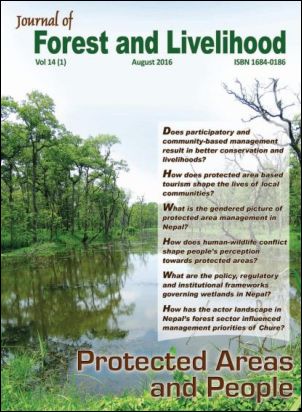Protected Areas, People and Tourism: Political Ecology of Conservation in Nepal
DOI:
https://doi.org/10.3126/jfl.v14i1.23159Keywords:
Cost and benefits, local community, resource, Tourism, TharuAbstract
While Protected Area based Tourism (PAT) has become a global phenomenon, its social, economic and environmental implications are also widening. Almost half of the entire tourists coming to Nepal visit protected areas (PAs). The country has embraced this as an opportunity for conservation, poverty reduction and economic development. However, only limited groups, often outsiders or elites, are reported to reap benefits of PAT whilst poor and marginalized groups struggle for both rights and benefits. Further, the distribution of tourist as well as the revenue generated is not even across different PAs. Policy and legal ambience are partly muddled with numerous approaches for resource management. However, recent ‘paradigm shift’ in the management and governance of PAs offers optimism to address social, economic and environmental anomalies. In the pretext of limited rigorous site specific studies and complexities to measure trade-offs between problems and gains, this article stresses on transformation in PA governance so as to realize full and equitable sharing of benefits from PAT.
Downloads
Downloads
Published
How to Cite
Issue
Section
License
CC-BY-NC: This license allows reusers to distribute, remix, adapt, and build upon the material in any medium or format for noncommercial purposes only, and only so long as attribution is given to the creator.





